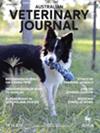Effects of age on accuracy of advanced imaging modalities in identifying intervertebral disc extrusions in Dachshunds
Abstract
Objective
The aim of this study was to ascertain whether patient age was a significant factor for the accurate identification of compressive intervertebral disc extrusions (IVDE) in Dachshunds using non-contrast computed tomography (CT).
Methods
This retrospective analysis encompassed 150 Dachshunds evaluated for suspected IVDE at a referral hospital in south-eastern Queensland, Australia. Each case underwent diagnostic evaluation by CT, either with or without myelography, or magnetic resonance imaging (MRI), followed by surgical intervention for an intervertebral disc extrusion.
Results
In the <9-year dog cohort, 94.7% (71/75) were diagnosed with IVDE via non-contrast CT and proceeded to surgery. In contrast, the ≥9-year dog cohort, only 56% (42/75) were diagnosed via non-contrast CT, with the remaining 44% (33/75) necessitating CT myelography or MRI for diagnosis. The odds of requiring CT myelography or MRI increased 13.95-fold (95% CI, 4.62–42.13) in Dachshunds aged 9 years or older. Furthermore, each additional year of age was associated with a 0.60 increase in the odds of undergoing these advanced imaging modalities (CT myelography or MRI) (95% CI, 0.49–0.74).
Conclusions
Age significantly affected the efficacy of non-contrast CT in diagnosing IVDE in Dachshunds. Dogs aged 9 years and above were substantially more likely to require CT myelography or MRI due to the reduced visibility of disc extrusions on non-contrast CT. Veterinarians performing advanced imaging on older Dachshunds for suspected IVDE should be aware of the limitations of non-contrast CT in obtaining an accurate diagnosis and localisation of IVDE, and be prepared to perform either CT myelography or MRI if required.

 求助内容:
求助内容: 应助结果提醒方式:
应助结果提醒方式:


